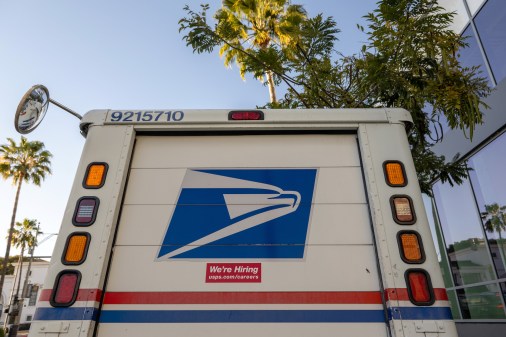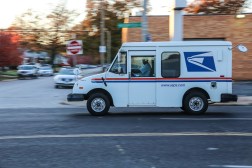A connected mailbox? Announcing the Internet of Postal Things

(USPS OIG)
Your mailbox might soon have its own fridge.
In a white paper released last week, the U.S. Postal Service’s Office of the Inspector General proposed a plan to incorporate Internet of Things concepts into its day-to-day delivery operations — an Internet of Postal Things. Among the potential applications of this ubiquitously connected mail service are everything from real-time customer-to-carrier communication to the ability to remotely order groceries to a smart, climate-controlled mailbox.
The possibilities span beyond just convenience and novelty, though: According to the paper, a connected USPS fleet could unlock a range of new, more profitable business models for a service that has historically struggled to make ends meet.
“IoT technologies could help the Postal Service develop applications to protect and enhance its core business through cost savings, operational efficiencies, new products and services, and ultimately, a better customer experience,” stated the paper’s executive summary. “Over time, they could also create new revenue opportunities.”
According to the report, an “IoPT” would change the way Americans engage with mail. Not only could smart mailboxes facilitate food storage, they could remotely communicate whether mail needed to be picked up, saving drivers scores of needless stops. They could also alert senders and receivers instantly upon package delivery.
And mailboxes would not be the only element receiving an upgrade — IoPT could redefine the capabilities of the fleet itself. The USPS has already announced its search for a next-generation delivery vehicle to replace its rapidly dilapidating supply of trucks. If equipped with the appropriate sensors, OIG argues, vehicles could perform municipal data gathering tasks, such as reporting pot holes and synchronizing with building smart meter systems to measure water and power usage. They could even use GPS to alter routes real-time in response to traffic conditions and report maintenance issues.
Given that USPS deploys 200,000 vehicles that travel a combined 1.2 billion miles each year, the possibilities are nearly endless, according to OIG.
“The Postal Service has a vast infrastructure of both stationary and mobile objects that crisscross the United States daily, creating a seemingly infinite number of connections,” the report says. “Many of these objects do not currently ‘talk,’ meaning they do not collect and communicate data. The density and reach of this network affords an almost unlimited potential for IoPT applications.”
This network includes even post office workers, whose ability to operate would be enhanced by wearable tech, the white paper says.
The Postal Service’s watchdog has a reputation for publishing innovative proposals for the agency: Last summer, the OIG put out a report looking at how 3-D printing could help the agency. But the adoption of an Internet of Things program hinges on the USPS itself — and the post office’s response to the white paper was far from zealous. Randy Miskanic, acting USPS CIO, summed up his thoughts on the meticulously researched, 34-page report in two noncommittal sentences:
“The U.S. Postal Service has reviewed and acknowledges the Internet of Postal Things Report. We will consider and review further the available opportunities.”
USPS declined to provide further comment the report.





